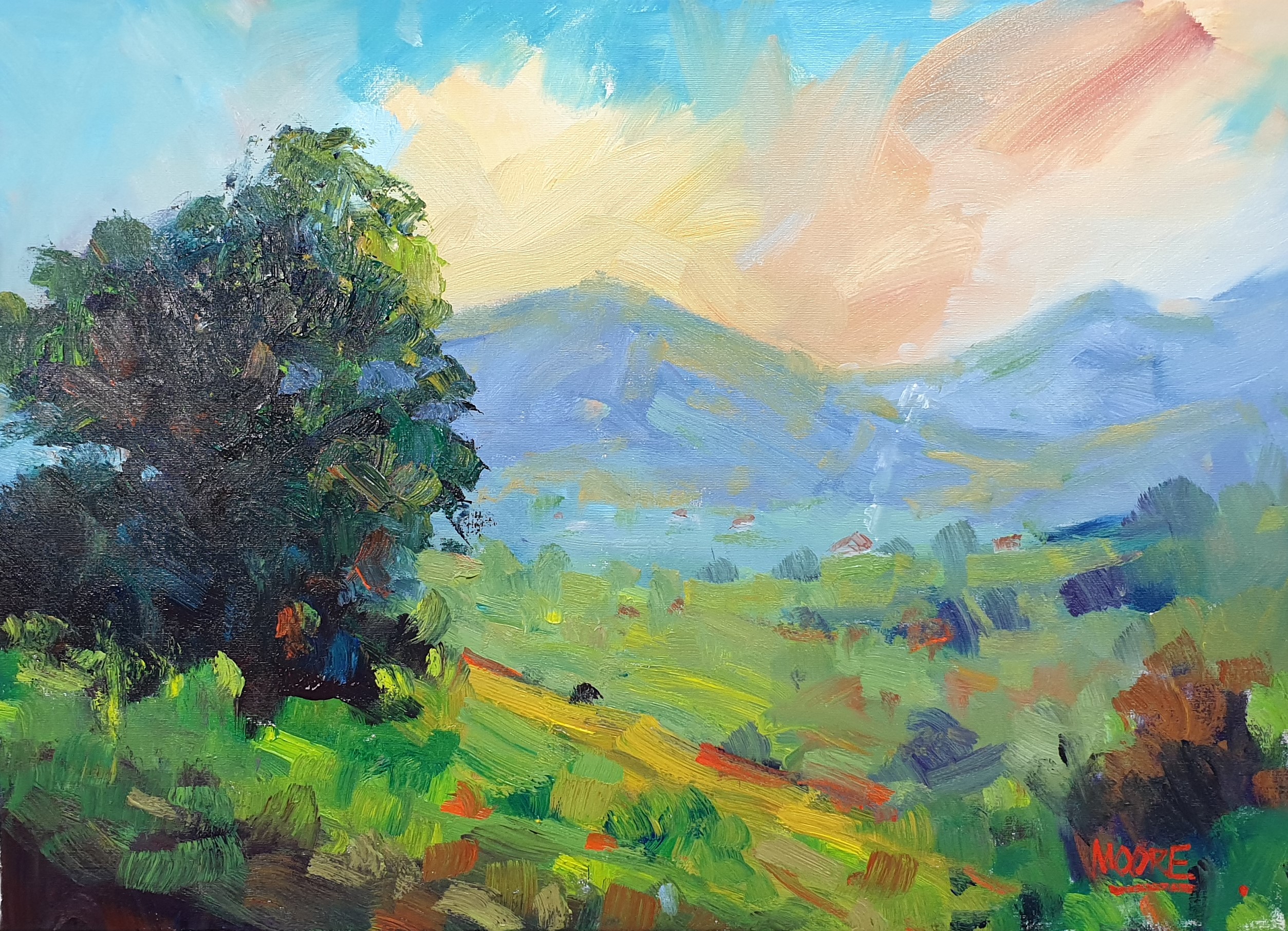
Daily Painting – Can It Help Improve Your Painting?
May 12, 2020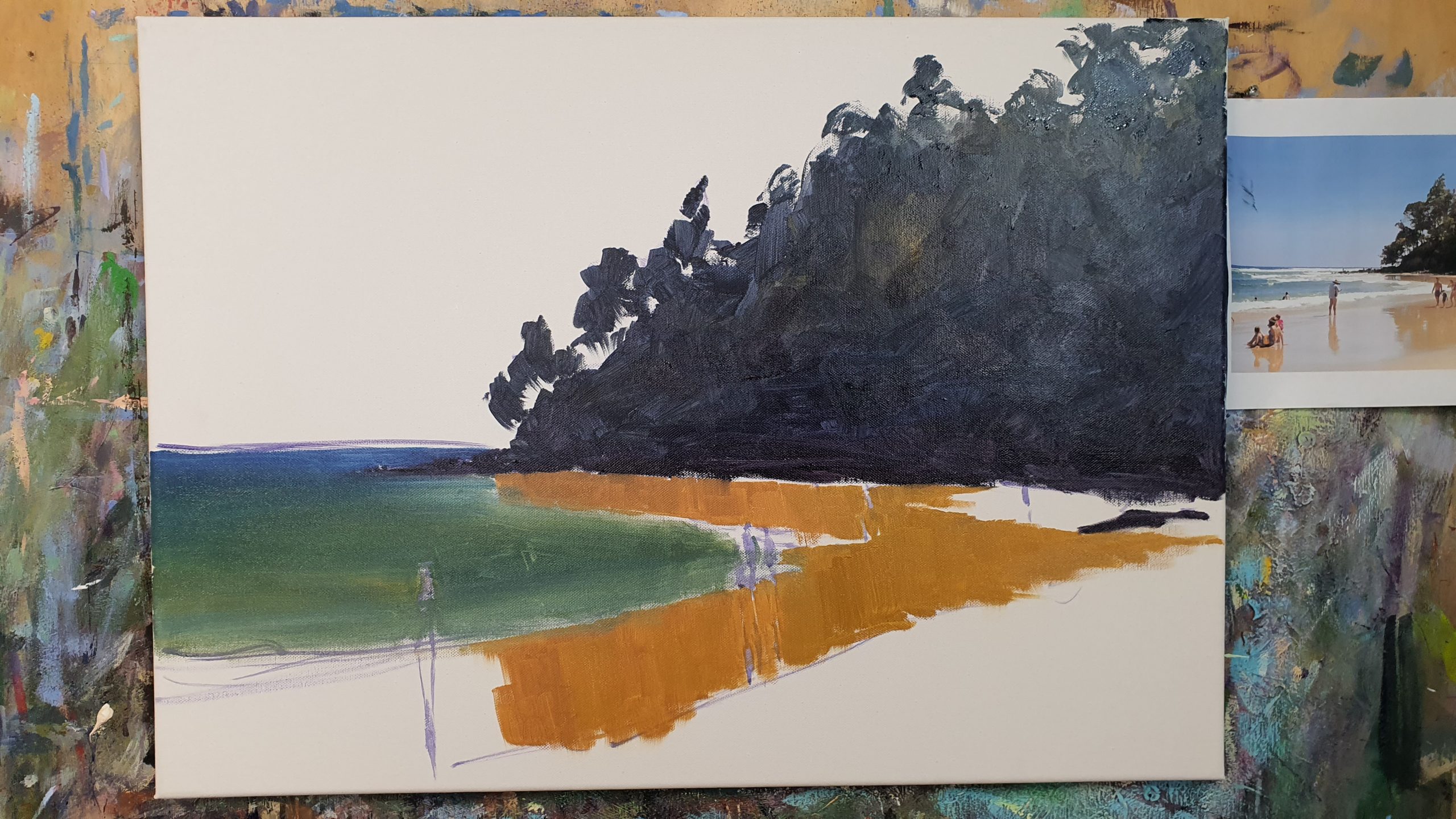
Painting Process Step By Step – Part 1
November 27, 2020When starting out learning to paint we have a tendency to want every painting to be a finished work of art … and as a result we overlook the importance of understanding values and doing values studies.
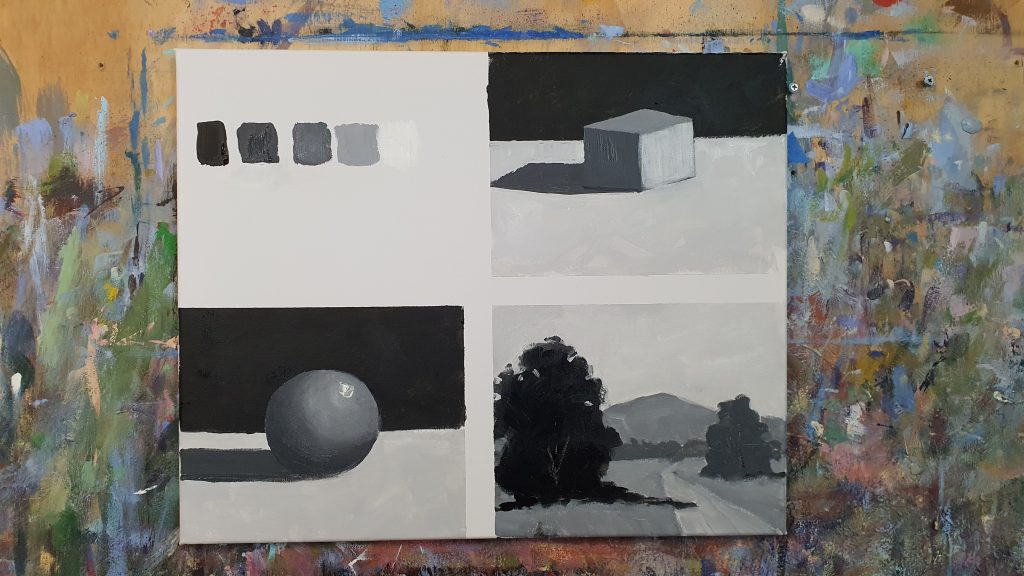
In this article I want to look at how regularly doing values studies can help you to improve your painting.
First though we need to address the question …
What Are Values & Value Studies?
At the Learn To Paint Academy we place a lot of focus on values and values studies.
Values are simply a scale of dark to light.
In painting any form of realism values are critical. They bring form, shape and dimension to the objects in your painting.
Values can be thought of in simple terms (ideally for beginners) with a 5 values scale like this one:
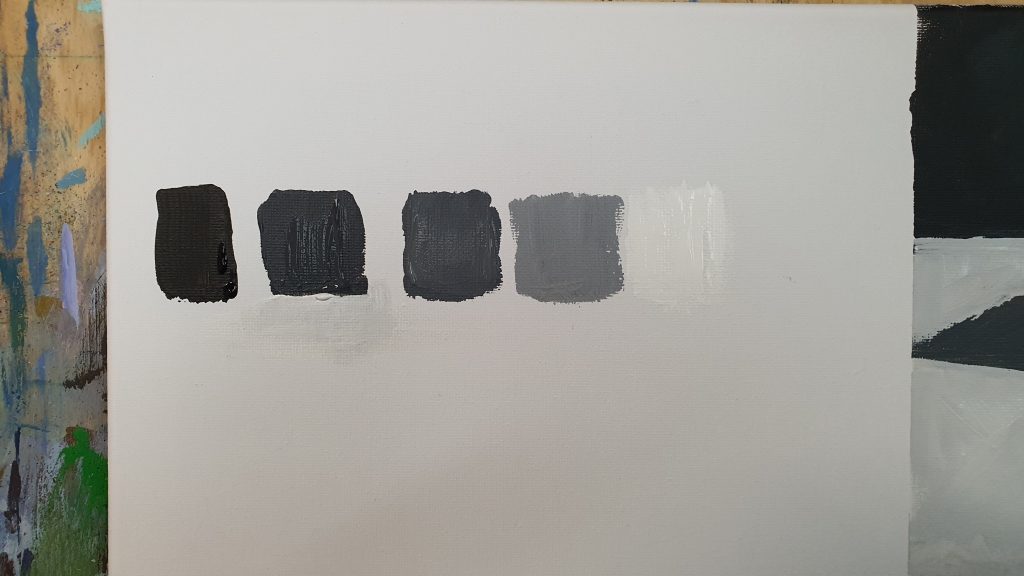
As you can see above I have mixed up steps in between the black on the left and the white to the right. In hindsight my middle value and the step between it and the white are both to dark and need to be lightened off a bit.
NOTE – A five values scale is a starting point. Most master artists will work with a ten values scale even though they may work within a tight range within that values scale.
A good first values study then would be to have a go at creating a five values scale like the one above. If you are feeling really game try also doing a ten values scale.
How Are Values Studies Useful?
You may be wondering how and why creating a values study would be useful to you.
Well the answer is simple … when you understand values you can start to create a sense of form and dimension within your painting. It’s the effective use of values that bring a painting to life.
Have you ever seen a painting that just looks flat?
Lot’s of beginner and hobby level paintings are like this. They have no depth or feel of realism to them. The key to improving these paintings is nearly always a better use of values … hence the value in regularly completing values studies.
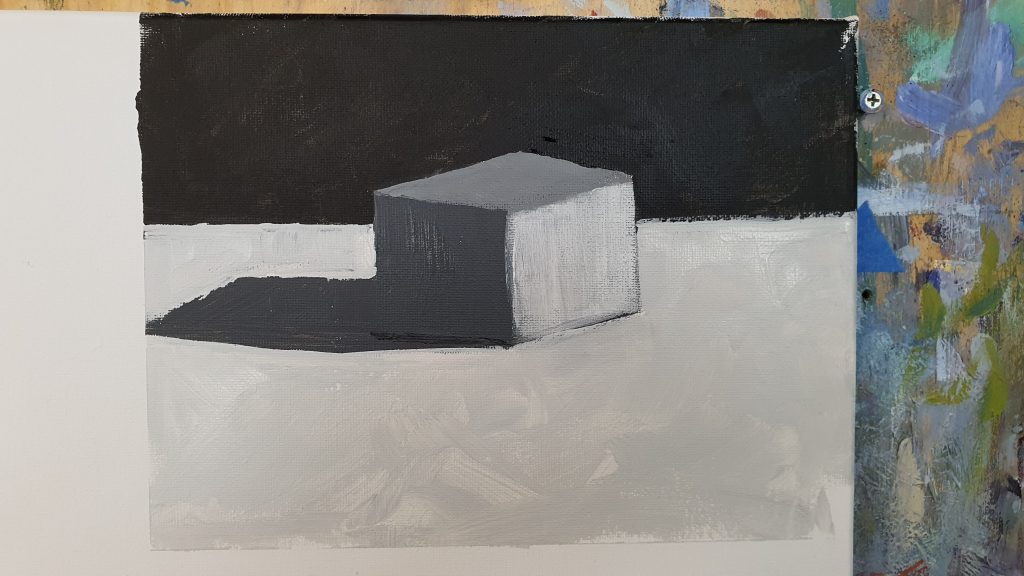
As you can see above this small study of a cube in light demonstrates the importance of values in painting.
The effective use of values has made this cube look three dimensional even though it is painted on a two dimensional surface.
That is why values are so important to painting. They literally form the underlying structure of the painting which brings it to life.
Practically all successful paintings have a strong values structure to them. Paintings that fail to command attention and get noticed usually lack in the correct use of values.
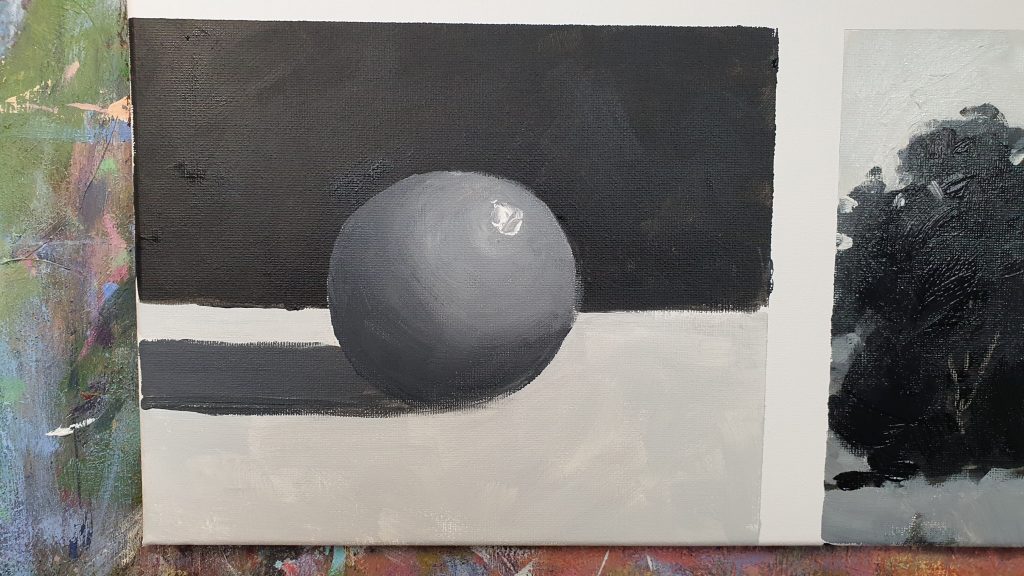
Looking at the small study of the sphere above you can sense there is a definite source of light moving through the painting. This illusion is created through the use of just the five values illustrated above.
Values will create light and shadow in a painting. They will indicate to the viewer where the light is coming from and how it moves through the painting.
Do A Values Study Before Attempting Your Finished Painting
Prior to attempting a finished painting the masters of yesteryear, and many today, would first go to great lengths to prepare themselves.
One of the keys to their preparations was painting a values study of the scene.
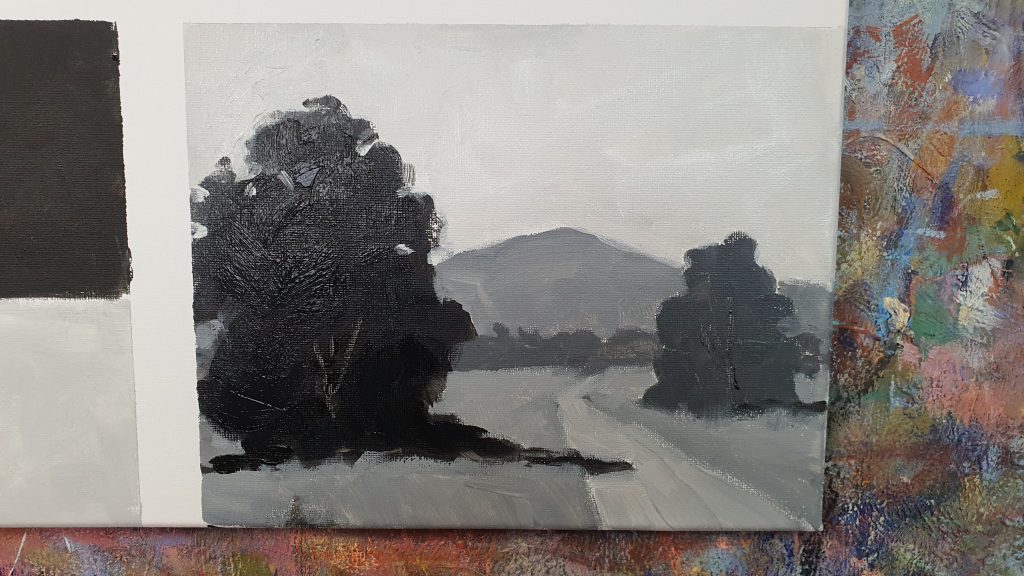
In this picture above you can see a small values study I did of a simple landscape scene.
Notice how this simple landscape has a sense of depth and dimension to it even though it has no colour, no details etc.
It is just basic shapes with no attempt to render the objects accurately. The only goal was to use the five values scale to establish a values pattern.
Note – In the Moore Method of Painting that we teach at the Learn To Paint Academy, creating a values pattern is built right into our 3 step process.
Start Your Own Practise Of Completing Values Studies
Doing values studies like these has been something I have kept coming back to over ten years of learning to paint. My one regret though is I have not done this regularly enough.
Too many of us, myself included, want to get to the end result of a finished masterpiece. We are in too much of a hurry and lack the patience and discipline to engage in basic fundamental skill building like values studies.
Think of a concert pianist who plays on world stages. They spend most of their time in practise drilling scales for hours at a time.
We can all improve our painting by doing a little more of practising the basics.
You can start by deciding to do one small values study a week.
Start by having a go at these ones and continue on from there.
Ready to improve your painting? Click Here To Join The Learn To Paint Academy


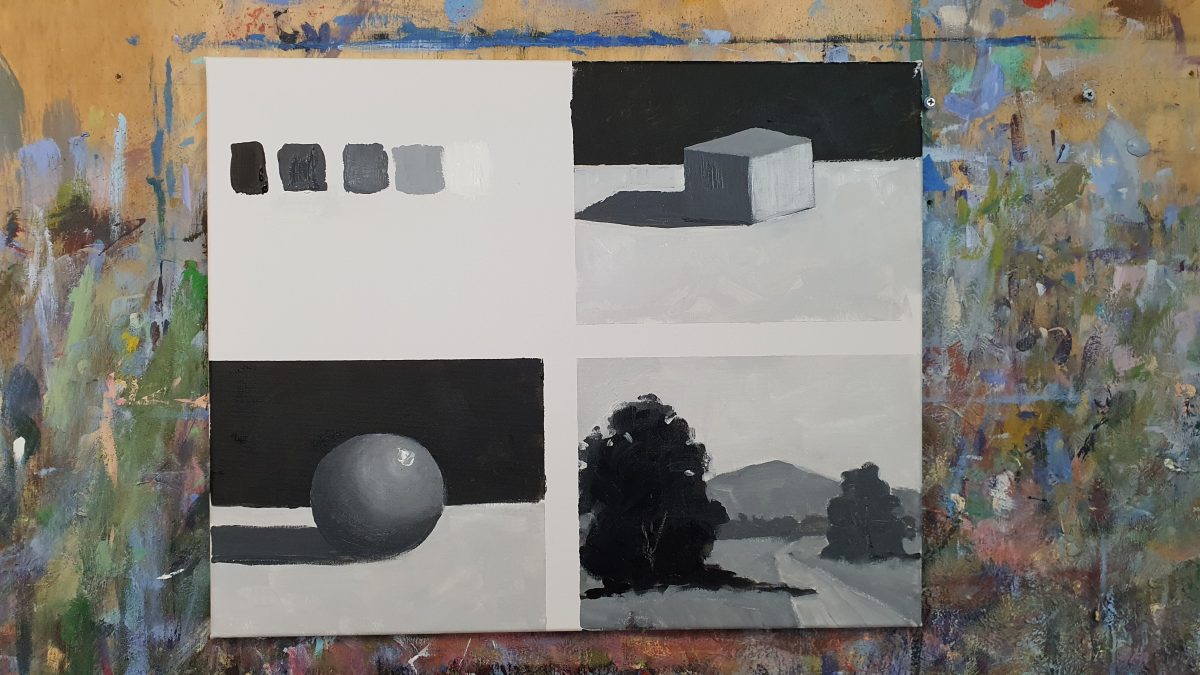
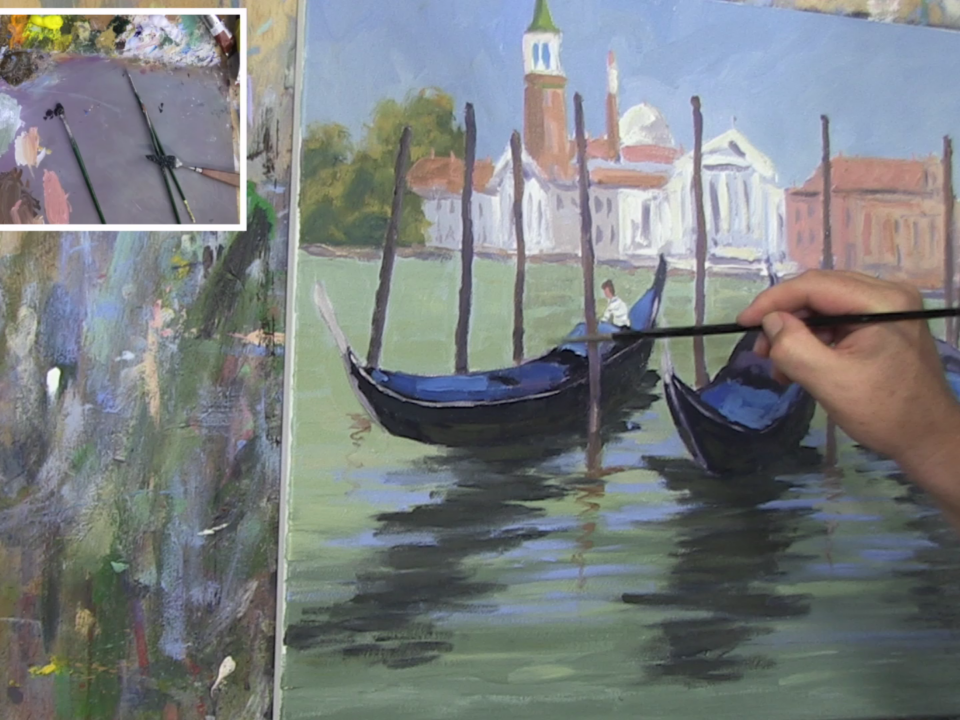
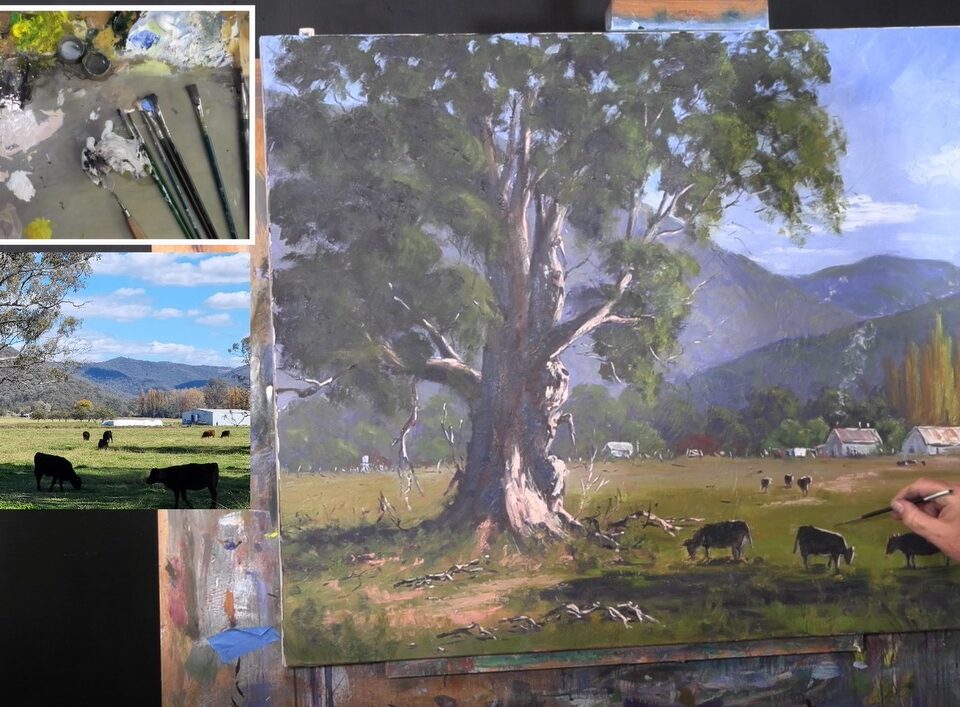
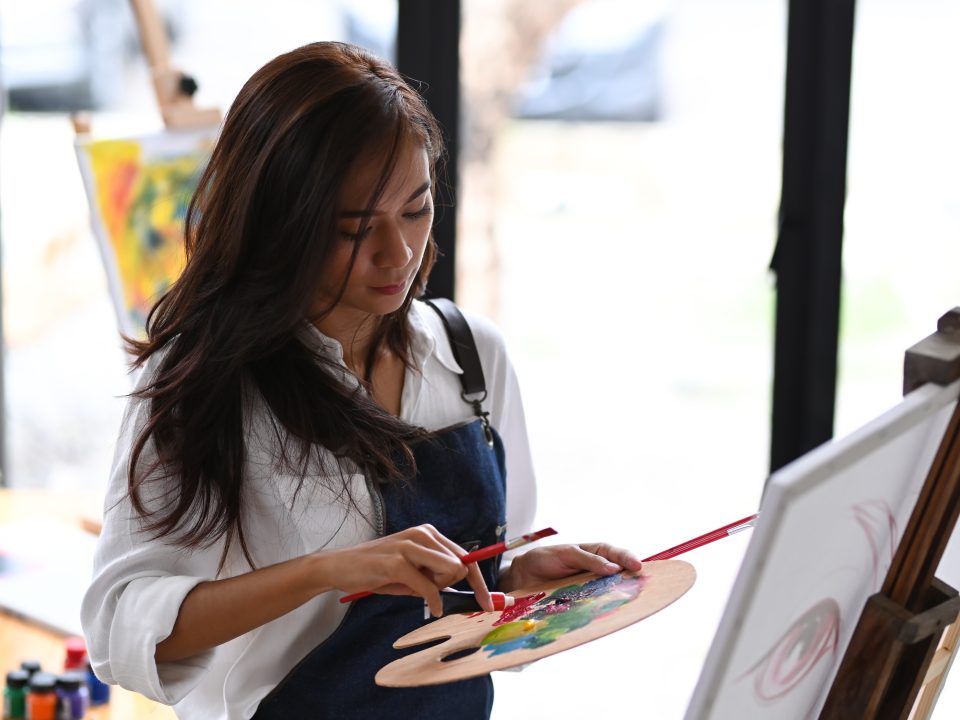
Thanks for the lessons, see what you are saying. God bless you
Pleasure Donna … thanks for reading the post
hi Rod I got a lot out of your first class but have not gone further because I am an abstract artist and I am not sure if this is the right way for me to go, your comments would be of great help, thanks maria
Thanks for your comment Maria. There is a difference between really good abstract art and average abstract art. Most of the good abstract artists who do great work are well versed (often academically trained) in the fundamentals of good painting … composition, values, colour, etc. My view is if you want to become a very good abstract artist it is worth while learning the fundamentals of good painting
Hi Rod thank you for the valuable lesson,(see what I did there !) the old adage practice makes perfect only works if we first have the knowledge to practice with!
Craig
🙂 Absolutely right Craig … we need Knowledge first and then to practise that knowledge to improve our skills